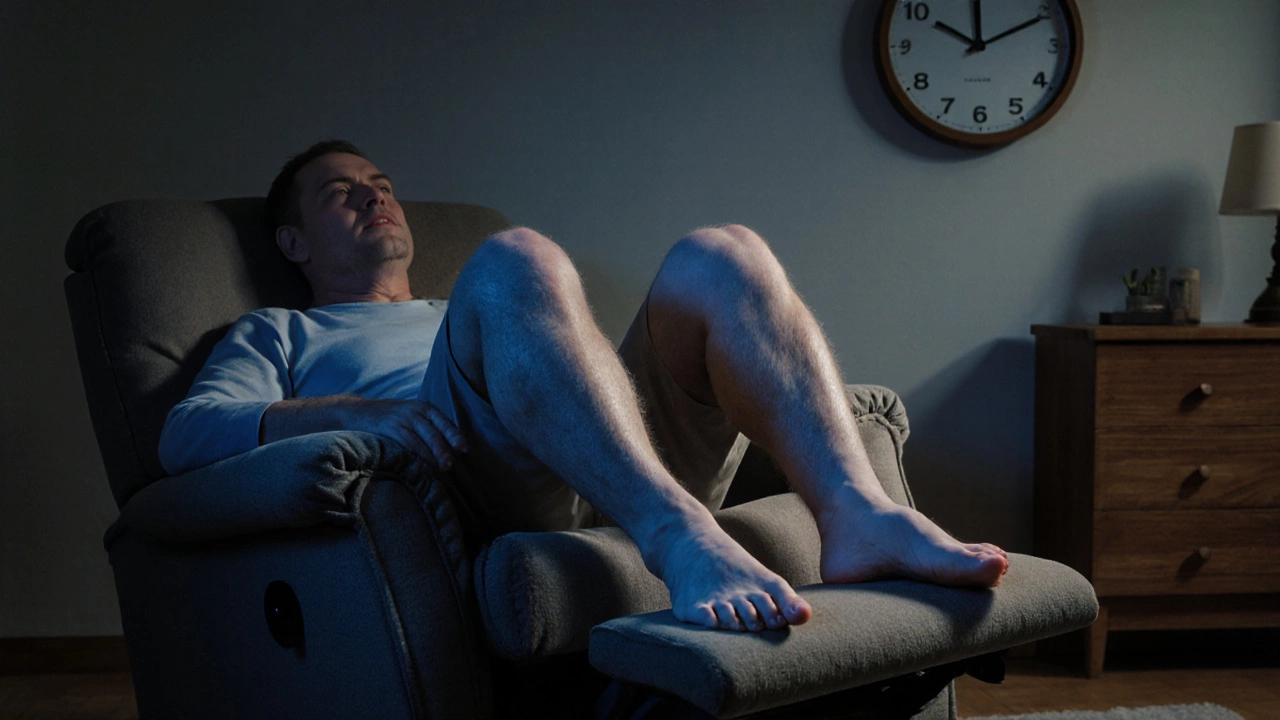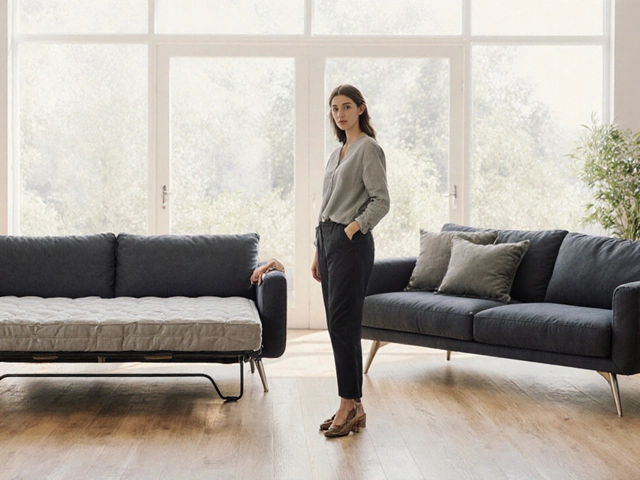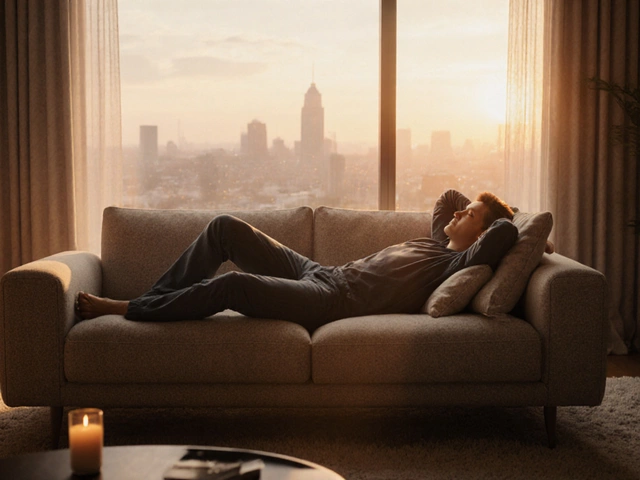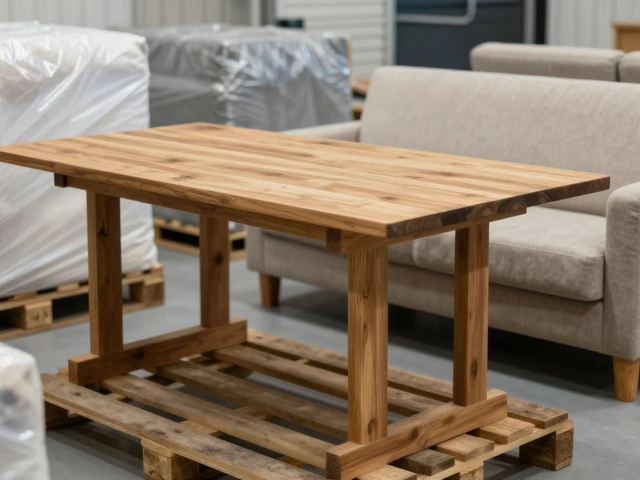If your legs ache every night as soon as you get into bed, you’re not alone. Thousands of people wake up with heavy, throbbing, or crampy legs-not from overexertion, not from injury, but simply because of how they spend their evenings. And the culprit might not be your mattress. It could be your recliner.
That cozy recliner might be the problem
You sit back after dinner, kick up your feet, and let the warmth of the recliner wrap around you. It feels like heaven. But if you’ve been doing this for hours, especially with your legs propped too high or too low, you’re setting up a perfect storm for nighttime leg pain. Recliners aren’t designed for long-term, passive use. They encourage a posture that cuts off circulation, compresses nerves, and strains muscles without you even realizing it. When you recline with your knees bent at sharp angles or your feet dangling off the footrest, blood pools in your lower legs. Fluid doesn’t drain properly. Nerves get pinched. Muscles stay tense. It’s not just about sitting too long. It’s about how you sit.How your recliner posture messes with circulation
Your legs rely on muscle movement to pump blood back up to your heart. When you’re standing or walking, your calf muscles act like little pumps. But when you’re slumped in a recliner with your legs bent and unsupported, those pumps stop working. Blood starts to pool in your calves and ankles. Fluid leaks out of your veins into surrounding tissue. That’s why your legs feel swollen, tight, or heavy by bedtime. It’s not water retention from salt-it’s venous stasis caused by poor positioning. A 2023 study in the Journal of Vascular Health tracked 320 adults who spent over 3 hours daily in recliners. Nearly 68% reported leg discomfort at night. Those who adjusted their leg position before bed saw a 52% drop in symptoms within two weeks.What position in the recliner causes the most trouble?
Not all recliners are created equal. And not all sitting positions are equally harmful. Here’s what to watch for:- Feet hanging off the footrest - This puts pressure on the back of your knees, compressing the popliteal vein and slowing blood flow.
- Knees bent higher than your hips - This creates a sharp angle that restricts circulation and strains the hamstrings.
- Legs fully extended with no support - Your calves dangle, leading to muscle fatigue and nerve irritation.
- Sitting too far back with no lumbar support - This slumps your pelvis, tilting your spine and pulling on the sciatic nerve, which runs down your leg.
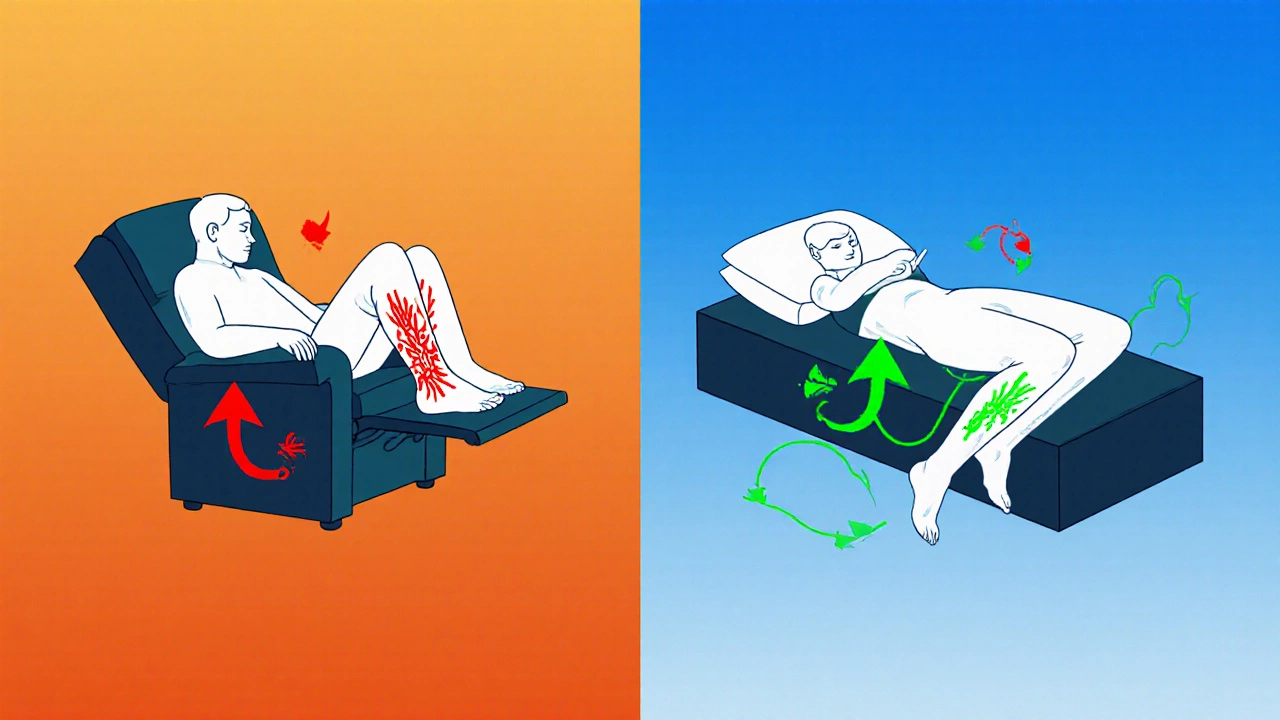
Why the pain hits at night, not during the day
You might wonder: if the recliner is the issue, why don’t my legs hurt while I’m sitting? Why only at night? It’s because your body is still recovering from the day’s buildup. During the day, movement-even small shifts in your chair-keeps blood circulating. At night, when you lie flat, gravity stops helping. The pooled fluid has nowhere to go. Nerves that were irritated all day finally scream for attention. Also, cortisol levels drop at night. Cortisol helps reduce inflammation. When it dips, swelling and discomfort become more noticeable.What to do instead: better ways to relax
You don’t have to give up your recliner. You just need to use it smarter.- Keep feet flat on the footrest - Your knees should be slightly lower than your hips. Use a cushion under your thighs if needed.
- Limit recliner time to 60-90 minutes - After that, stand up, walk around for 5 minutes, and do a few calf raises.
- Elevate legs properly before bed - Lie on your back and put your legs up on a pillow so they’re level with your heart. This helps fluid drain back toward your torso.
- Wear compression socks after long sitting - Even light 15-20 mmHg compression can make a big difference if you’ve been sitting all afternoon.
- Stretch before sleep - A simple seated toe curl or standing calf stretch for 30 seconds per leg helps reset muscle tension.
When it’s not the recliner
Leg aches can also come from other sources. If you’ve fixed your posture and still feel pain, consider these:- Restless Legs Syndrome (RLS) - A neurological condition that causes an irresistible urge to move your legs, often worse at night. It’s not caused by recliners, but sitting too long can make it worse.
- Peripheral Artery Disease (PAD) - Narrowed arteries reduce blood flow to your legs. Pain often comes with cramping during walking, not just at night.
- Nerve compression - A herniated disc or spinal stenosis can pinch nerves that travel down your legs. Pain may shoot from your lower back.
- Medication side effects - Some blood pressure drugs, antidepressants, and statins can cause leg discomfort as a side effect.
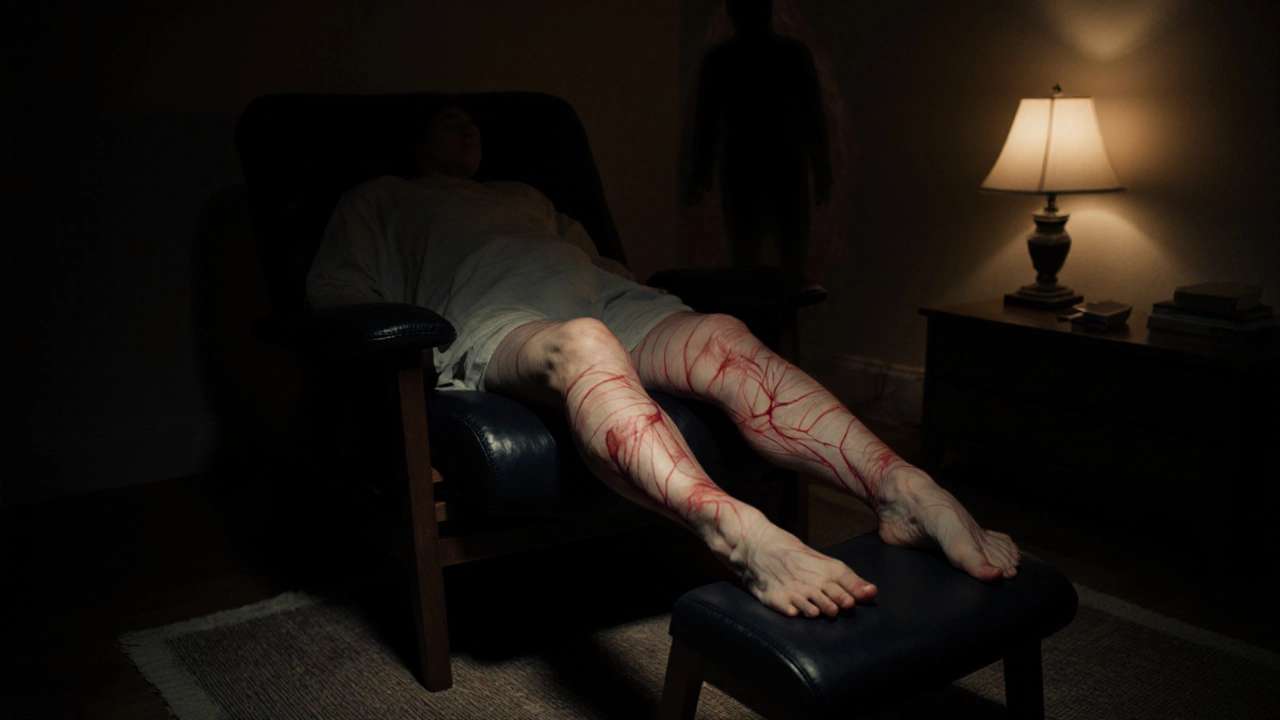
Real fix: The 10-minute nighttime reset
Here’s a simple routine that works for most people:- 10 minutes before bed, get out of the recliner.
- Walk around your living room for 2 minutes.
- Do 10 heel raises: stand on your toes, then slowly lower your heels.
- Stretch your calves against the wall for 30 seconds per leg.
- Lie down and prop your legs on two pillows so they’re level with your hips.
What kind of recliner should you use?
Not all recliners are built to support healthy posture. Look for these features:- Adjustable footrest - Should lock into multiple positions, not just one.
- Lumbar support - Should fill the curve of your lower back without pushing you forward.
- Seat depth - Your knees shouldn’t press against the front edge of the seat.
- Recline angle - Ideal is 110-120 degrees. Too upright = spine strain. Too reclined = leg compression.
Final thought: Comfort isn’t always good for you
We think of recliners as rest. But if you’re sitting in one for hours, you’re not resting-you’re stagnating. Your body needs movement, even in relaxation. Leg pain at night isn’t normal. It’s a signal. And it’s often telling you to change how you sit, not just how you sleep.Can sleeping in a recliner cause leg pain?
Yes, sleeping in a recliner can cause leg pain if your legs are bent at awkward angles or unsupported. This position restricts blood flow and puts pressure on nerves, leading to swelling, cramping, or aching by morning. It’s not the recliner itself-it’s the posture you maintain in it.
Why do my legs ache more at night than during the day?
During the day, even small movements help circulate blood. At night, when you lie still, pooled fluid and compressed nerves become more noticeable. Your body’s natural anti-inflammatory hormones also drop at night, making discomfort more intense.
Should I stop using my recliner completely?
No. You don’t need to give it up. Just limit use to 60-90 minutes at a time, adjust your leg position so your feet are flat on the footrest and knees are slightly lower than your hips, and stretch or walk around afterward. Small changes make a big difference.
Are compression socks helpful for leg aches from sitting?
Yes. Light compression socks (15-20 mmHg) help prevent fluid buildup in your legs after long periods of sitting. They’re especially useful if you’ve been in a recliner for hours. Wear them during the day, not while sleeping.
When should I see a doctor about leg pain at night?
See a doctor if your pain is sharp, one-sided, accompanied by swelling, redness, warmth, or if it wakes you up regularly. Also consult a doctor if you have a history of diabetes, heart disease, or if walking causes cramping. These could be signs of deeper issues like PAD or nerve damage.
